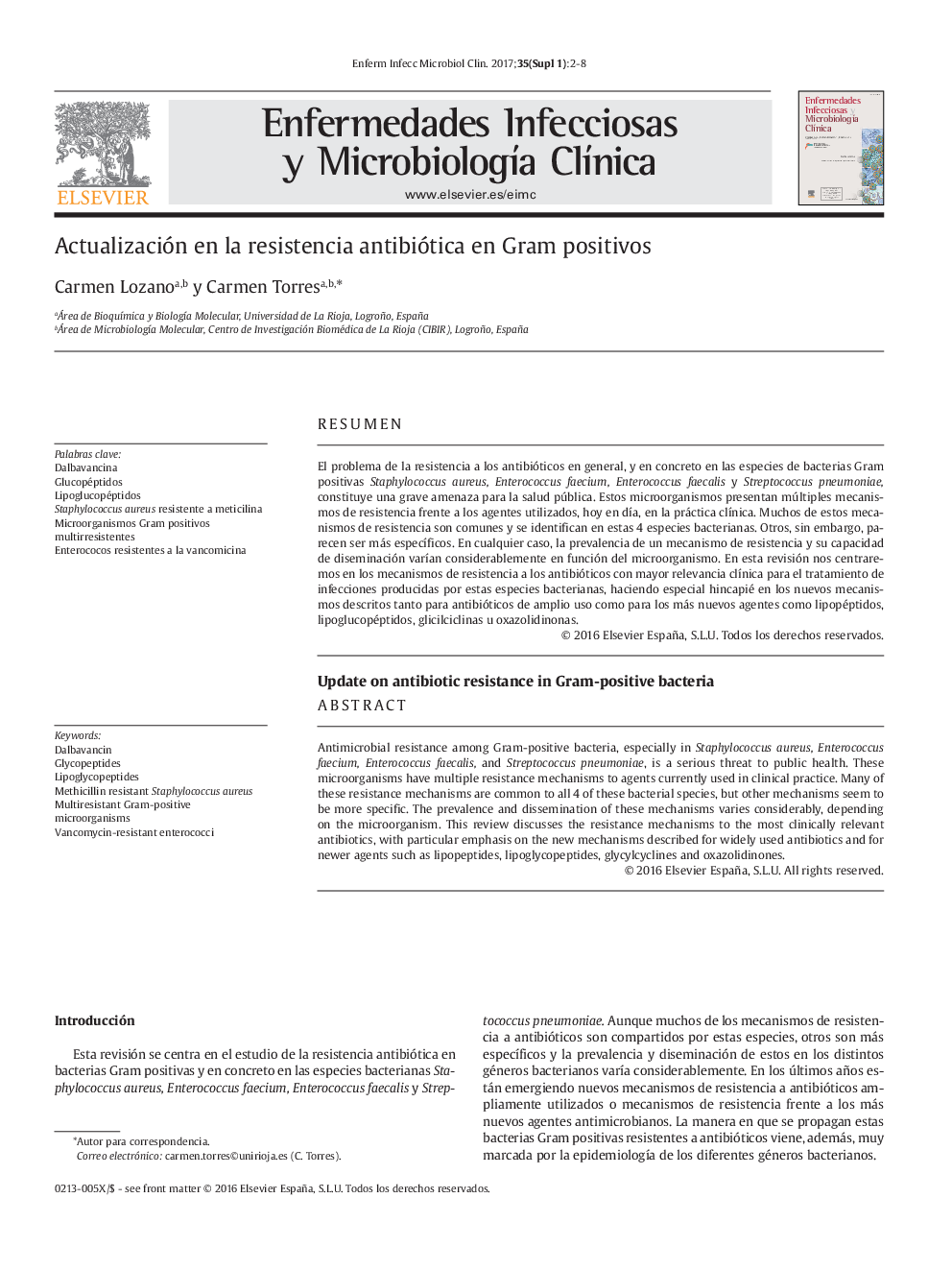| Article ID | Journal | Published Year | Pages | File Type |
|---|---|---|---|---|
| 5672041 | Enfermedades Infecciosas y Microbiología Clínica | 2017 | 7 Pages |
Abstract
Antimicrobial resistance among Gram-positive bacteria, especially in Staphylococcus aureus, Enterococcus faecium, Enterococcus faecalis, and Streptococcus pneumoniae, is a serious threat to public health. These microorganisms have multiple resistance mechanisms to agents currently used in clinical practice. Many of these resistance mechanisms are common to all 4 of these bacterial species, but other mechanisms seem to be more specific. The prevalence and dissemination of these mechanisms varies considerably, depending on the microorganism. This review discusses the resistance mechanisms to the most clinically relevant antibiotics, with particular emphasis on the new mechanisms described for widely used antibiotics and for newer agents such as lipopeptides, lipoglycopeptides, glycylcyclines and oxazolidinones.
Keywords
Related Topics
Life Sciences
Immunology and Microbiology
Microbiology
Authors
Carmen Lozano, Carmen Torres,
